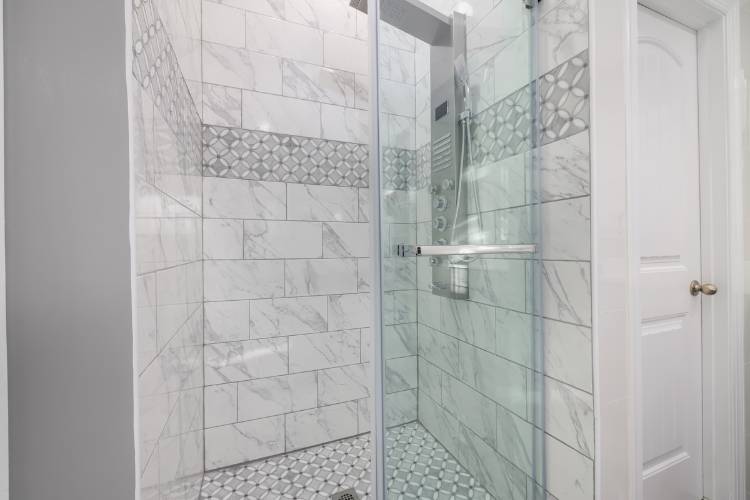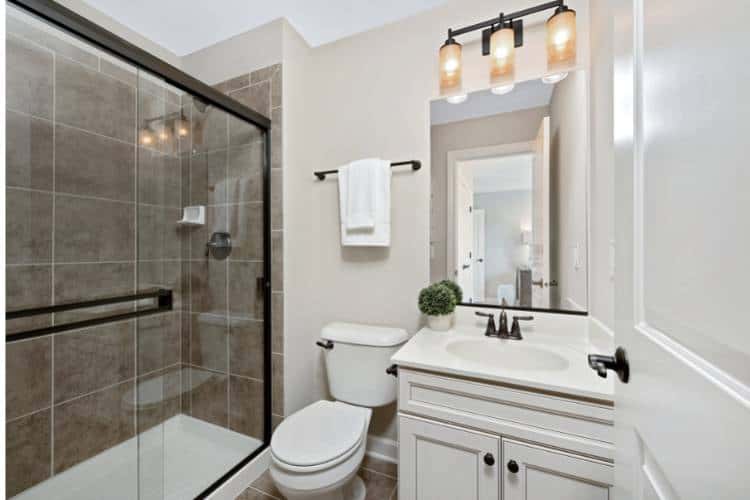From leaky faucets to a broken toilet flapper, peeling wall paint, or a drain that just won’t do its job, quite a number of issues can make your bathroom dull and dysfunctional, if not put it in total disarray.
And of course, problems such as blocked toilets are best left to professionals.
But there are also quite several quick repairs that you can tackle without much technical knowledge or experience.
In this blog, we shall highlight 5 small bathroom repair jobs that you can probably handle yourself to give your bathroom a seemingly effortless upgrade.
1. Quickly Fix a Leaky Faucet
A leaky faucet is by far among the most common yet annoying plumbing issues.
Whether it’s from the sink or your freestanding bath, a faucet leak can be caused by a worn-out washer, a broken O-ring, or a loose valve seat. But here’s the good news.
Fixing a leaking tap is among the easiest and most cost-effective repair jobs to handle in your bathroom.
All you need are some key tools such as pliers and a flat-head screwdriver, and a few minutes for this quick project.
Here are some tips you could use to handle the repair.
- First, you’ll turn off the water supply either from underneath your sink or at the main shutoff point for your house.
- Next, disassemble all parts related to the tap head, unscrewing screws and removing handles.
- Unscrew nuts where applicable—using an adjustable wrench should do the trick—and take apart any connecting pieces from both sides.
- Once everything loosens up, it’s time to apply new washers or O-rings (these will come with almost any repair kit)
2. Easily Replace a Toilet Flapper
Are you having flushing problems with your toilet? If so, it may be time to replace the toilet flapper.
Replacing a toilet flapper is surprisingly simple and not as daunting as many would think! With these simple steps, your toilet could be up and running in no time!
- First, locate the water supply valve on the wall behind your toilet and turn off its supply – this will make sure that no water escapes while we do our repairs.
- Turn any access panels away from the bottom of your tank and unscrew them so they loosen up.
- You should now see two knobs connected by a chain or strap; grab hold of these knobs with pliers and remove them, which will lead to removing the old flapper entirely.
- Next, inspect if the new flapper fits, attach it to the same position, and secure any screws that you previously took off.
3. Replacing Shower Door Bumpers – No Sweat!

Besides jeopardizing your bathroom privacy, a shower door that won’t close may cause ventilation issues and poor insulation.
It can also be unsightly, as the gap left can affect the overall design of the bathroom.
This is quite common in sliding doors that get out of alignment or sustain damage to some components.
Worn-out rollers or dirty door tracks are often to blame. The shower door bumper parts may also be worn-out or damaged and lost adhesion, thus needing a replacement.
If that’s the case, below are a few tips on how to replace worn-out bumpers easily.
- Start off by removing the existing bumpers gently with pliers, and inspect their condition. If they are loose, this is likely causing your issue.
- With new bumpers ready for replacement, all you need is some adhesive from the store (which usually comes in a tube) to stick them into place.
- With the adhesive applied, gently put the bumpers on each side of the shower door and let it sit for a few minutes.
4. Fixing a Clogged Drain
Has your bathroom sink’s drain become clogged or sluggish? You don’t necessarily have to call in plumbing professionals on this one.
Start by using a plunger on your drain pushing and pulling several times vigorously.
If your drain still won’t clear, open it up using pliers, put some gloves on, and remove as much debris and hair as possible using your fingers.
At times using an old toothbrush on these stubborn build-ups can come in handy too!
For those nasty blockages, you can also try sending hot water down the drain or use an alkaline drain cleaner.
These specialized cleaners contain chemicals that can break down organic material and dislodge the blockages holding up the flow.
5. Upgrade Your Bathroom with a Fresh Coat of Paint

Sometimes all your bathroom needs for a new lease of life is a new lick of paint on the walls, and this is something you can DIY.
Below are a few easy, helpful tips for painting your bathroom the right way.
- Start off by choosing your desired color scheme for your new bathroom look, and get the necessary supplies.
- These may include brushes, rollers, or aerosol spray paint depending on your desired look and the size of your bathroom walls.
- Before you start applying paint, make sure to remove bathroom essentials, clothing, furniture, fixtures, and decorations from the walls.
- Once done, wipe down these surfaces to get rid of any dust or dirt buildup.
- Use painter masking tape around edges that need protection to avoid getting paint on them. When complete, peel away tapings & let newly painted areas breathe in.
Having a functioning bathroom is crucial for your everyday routine. Unfortunately, certain bathroom problems are inevitable with continued use, and some can actually be quite costly to call a professional for.
Hopefully, this blog has inspired you with knowledge and newfound confidence in handling small bathroom repairs.

